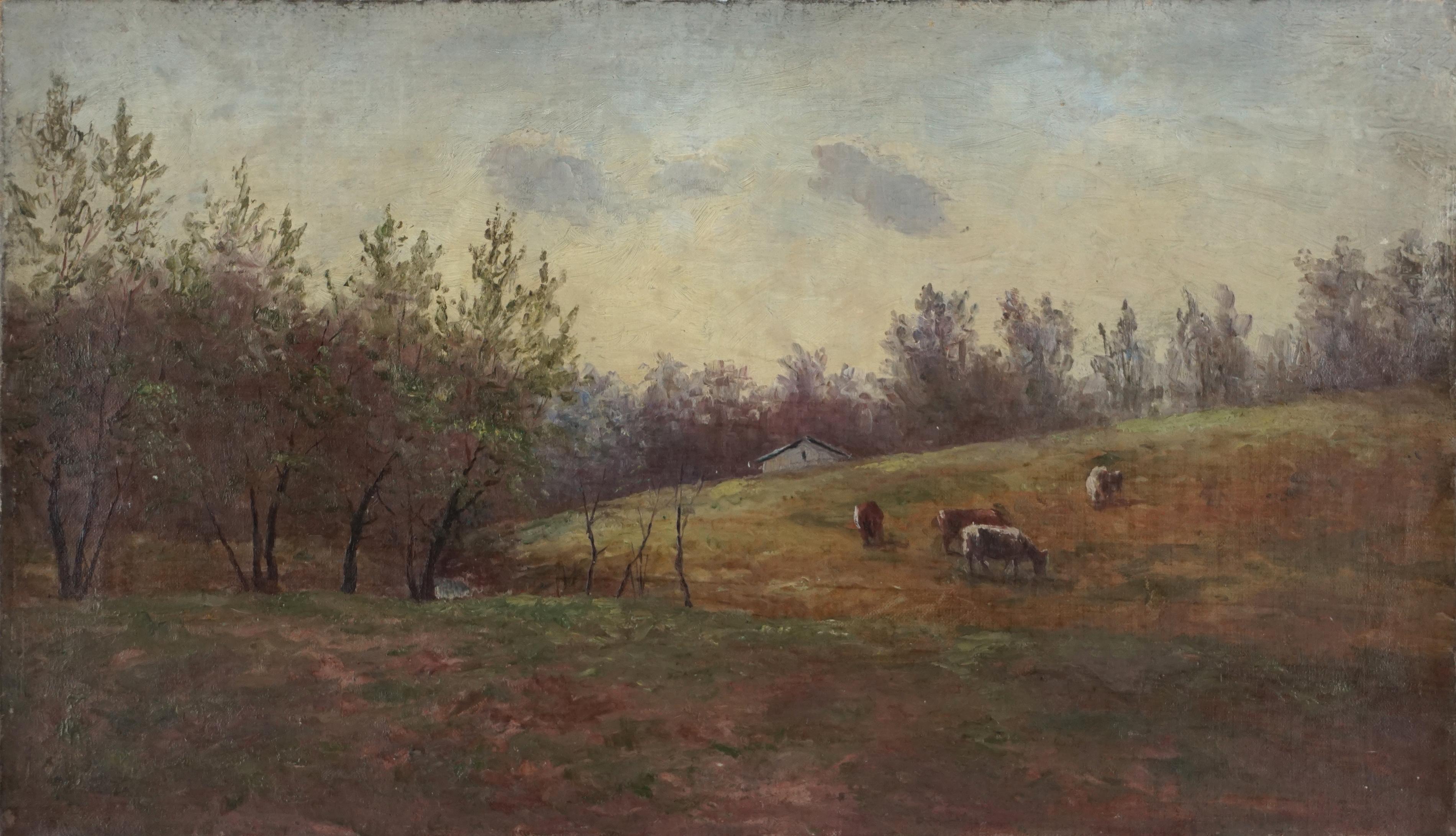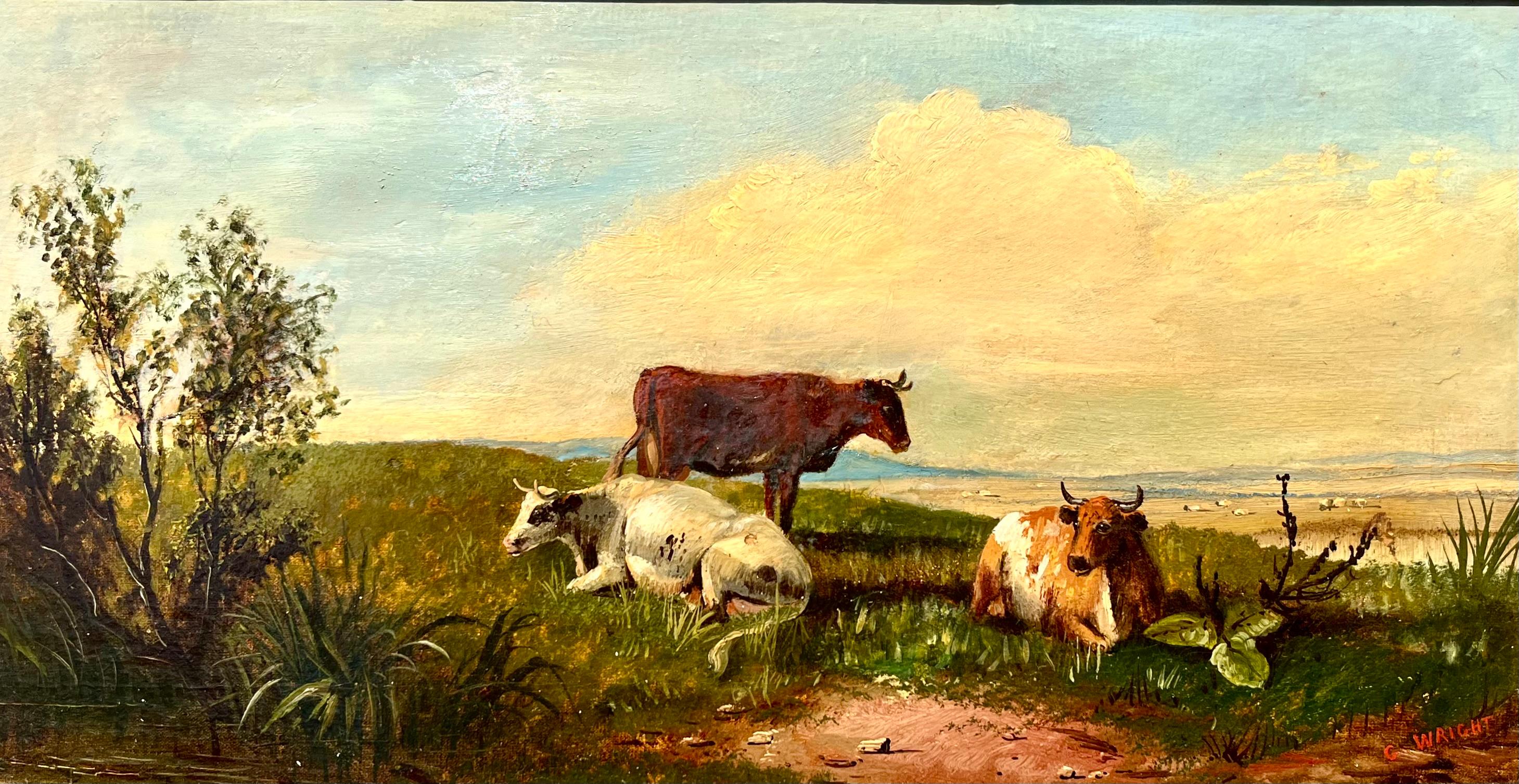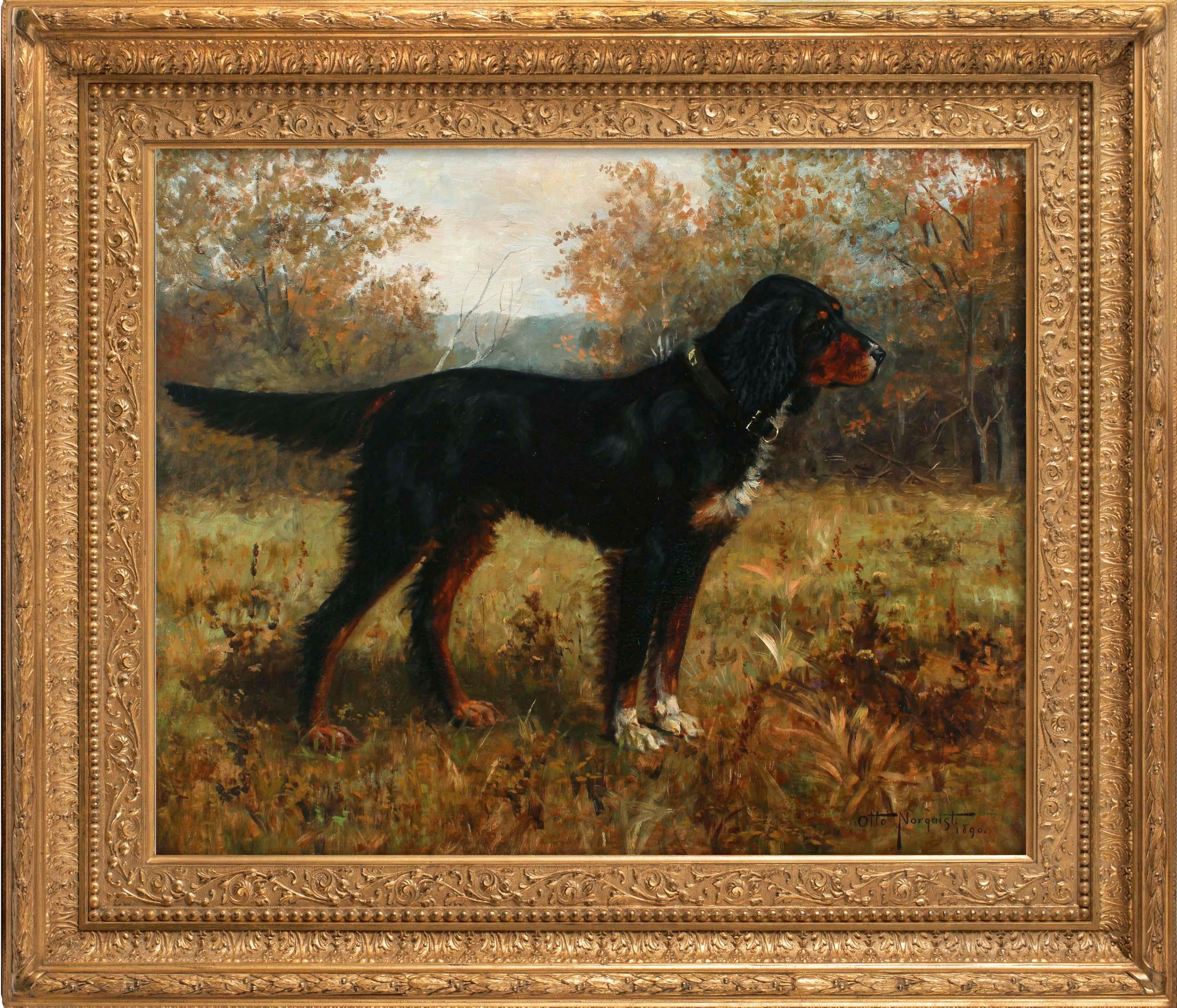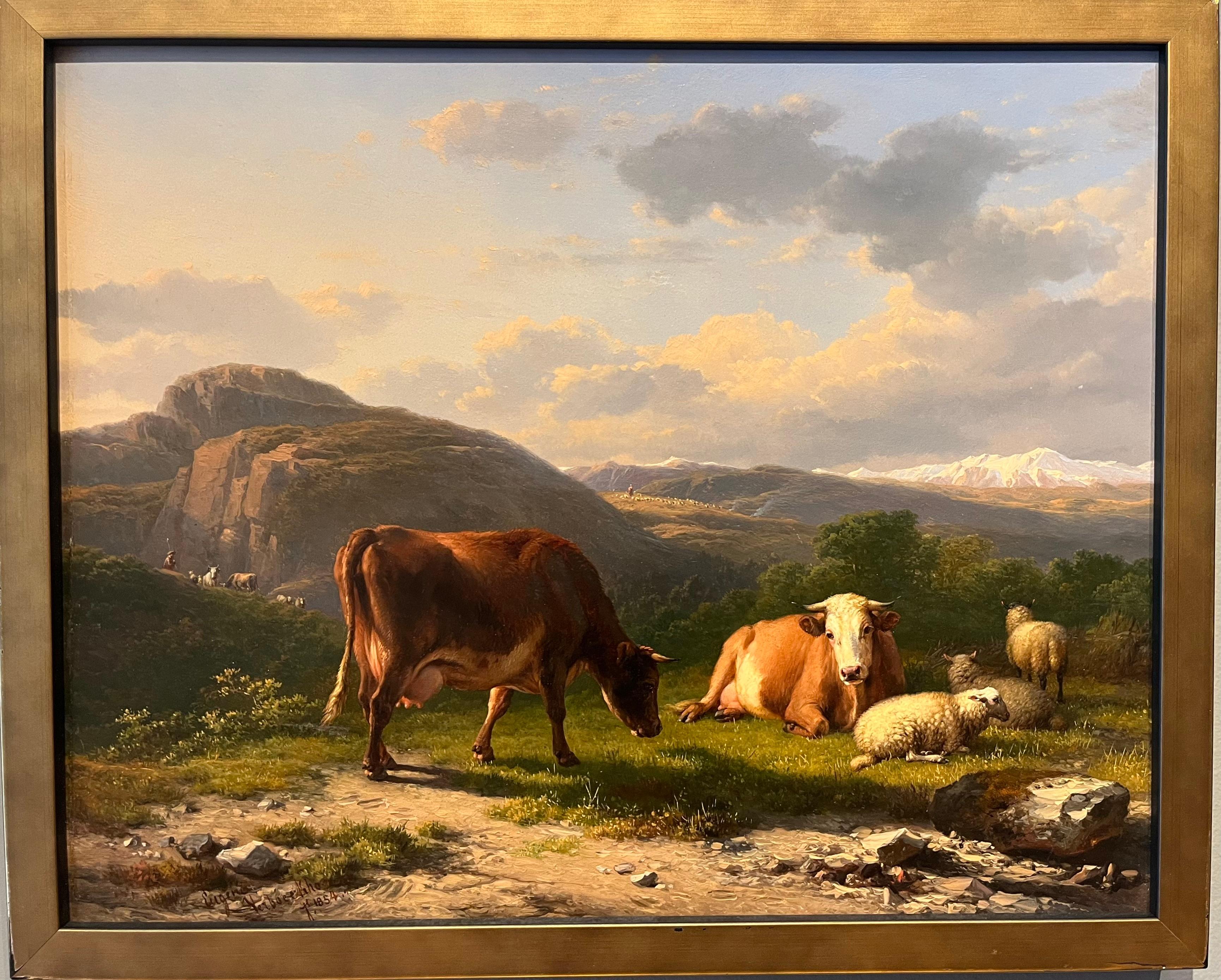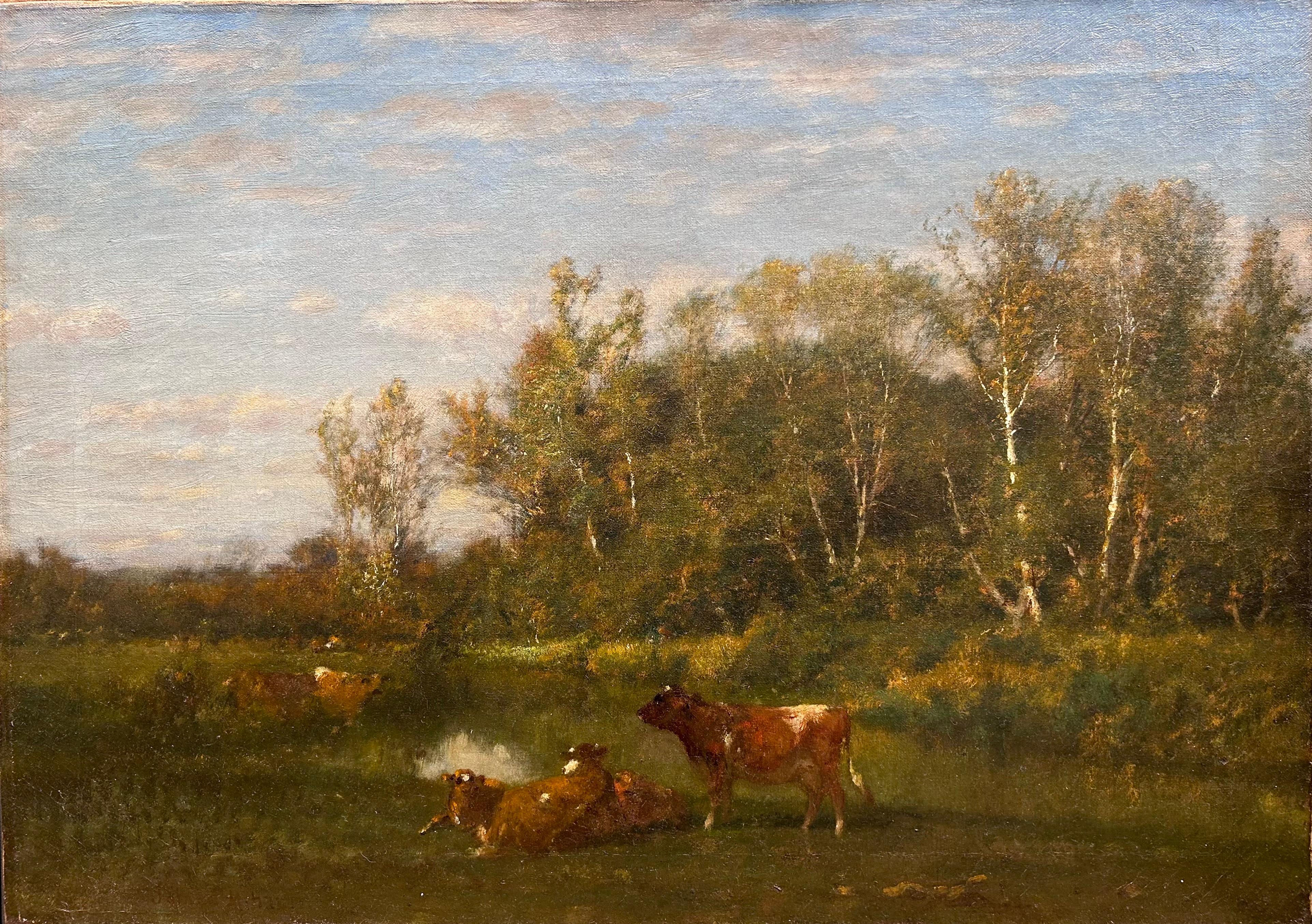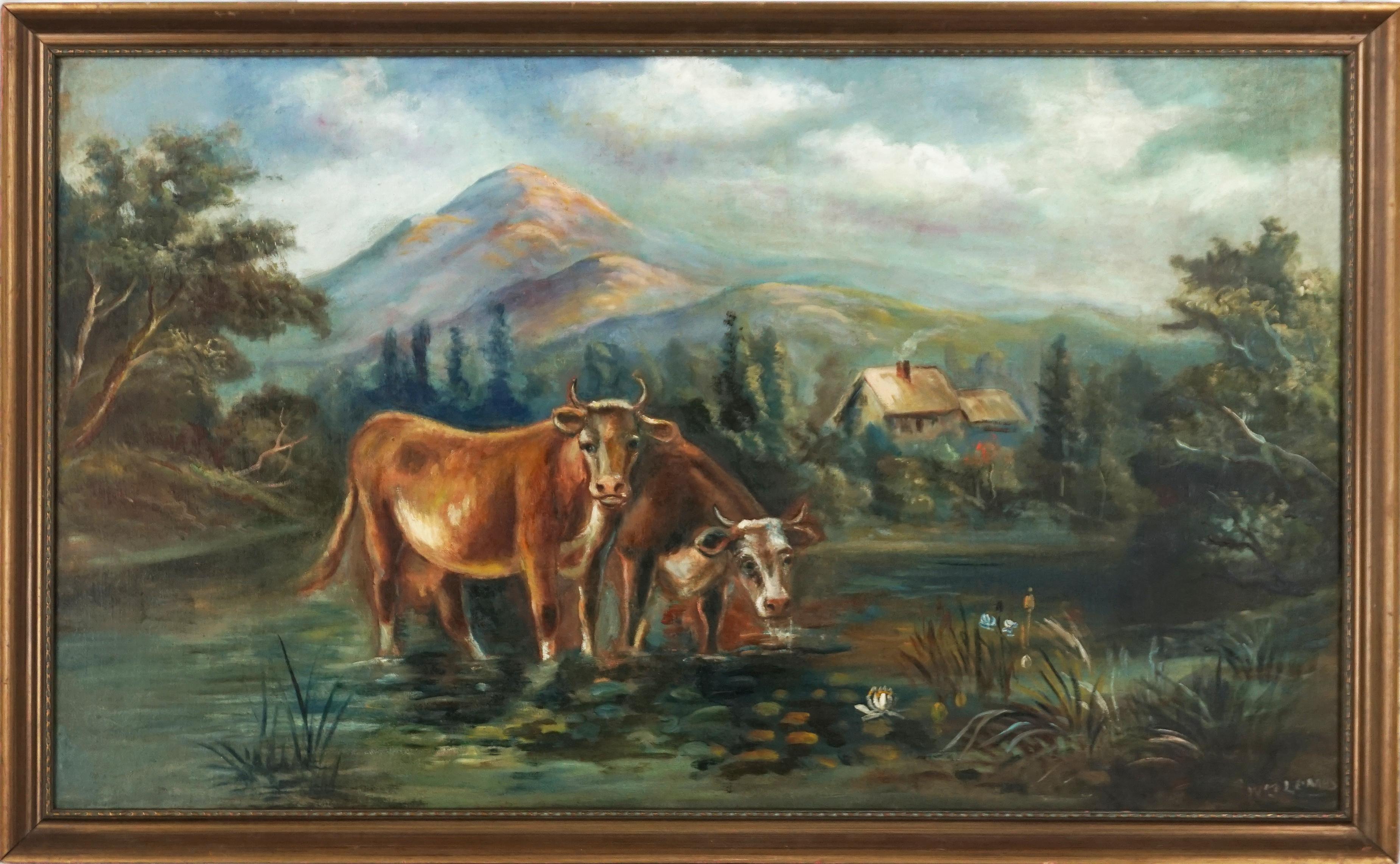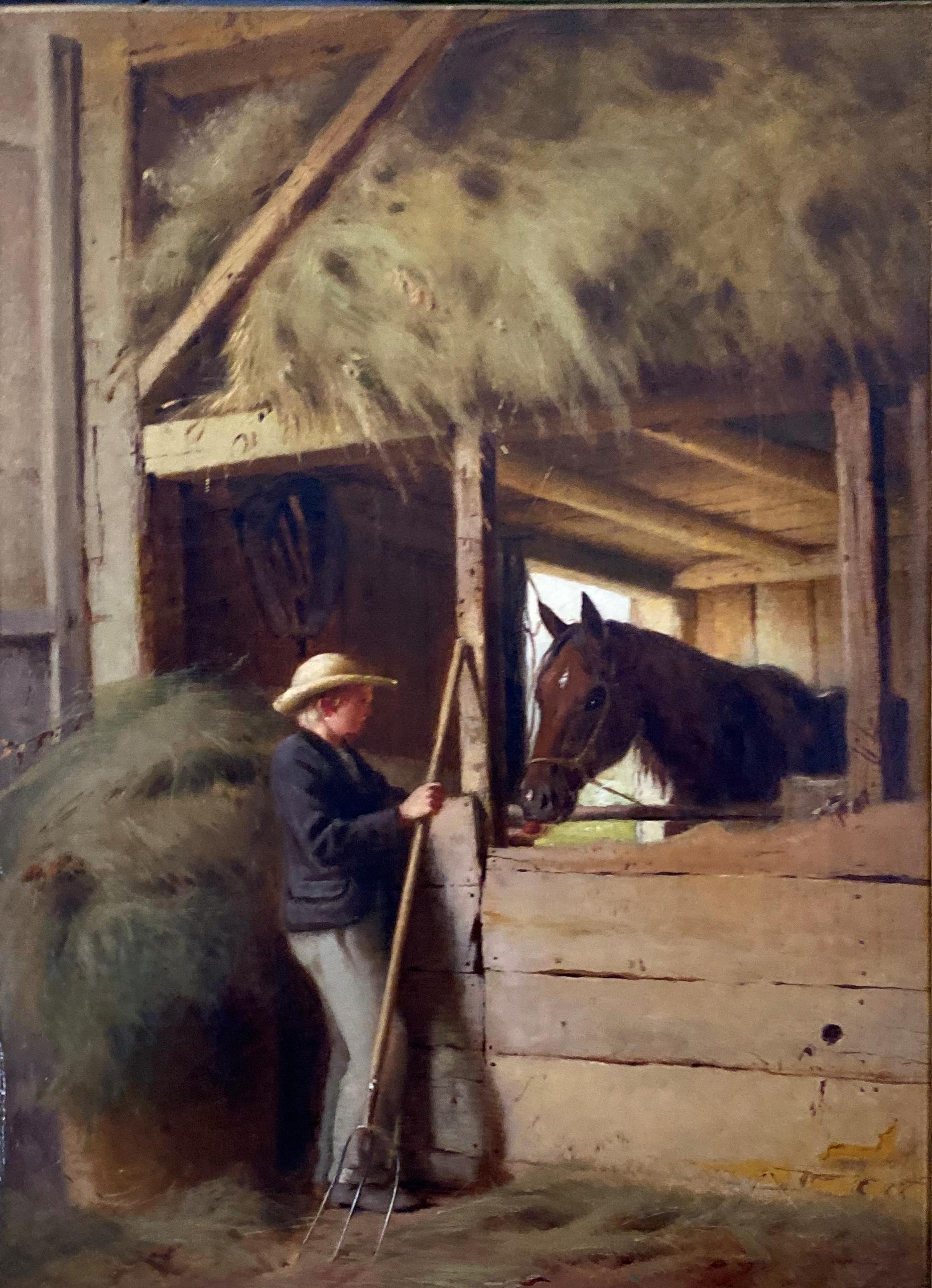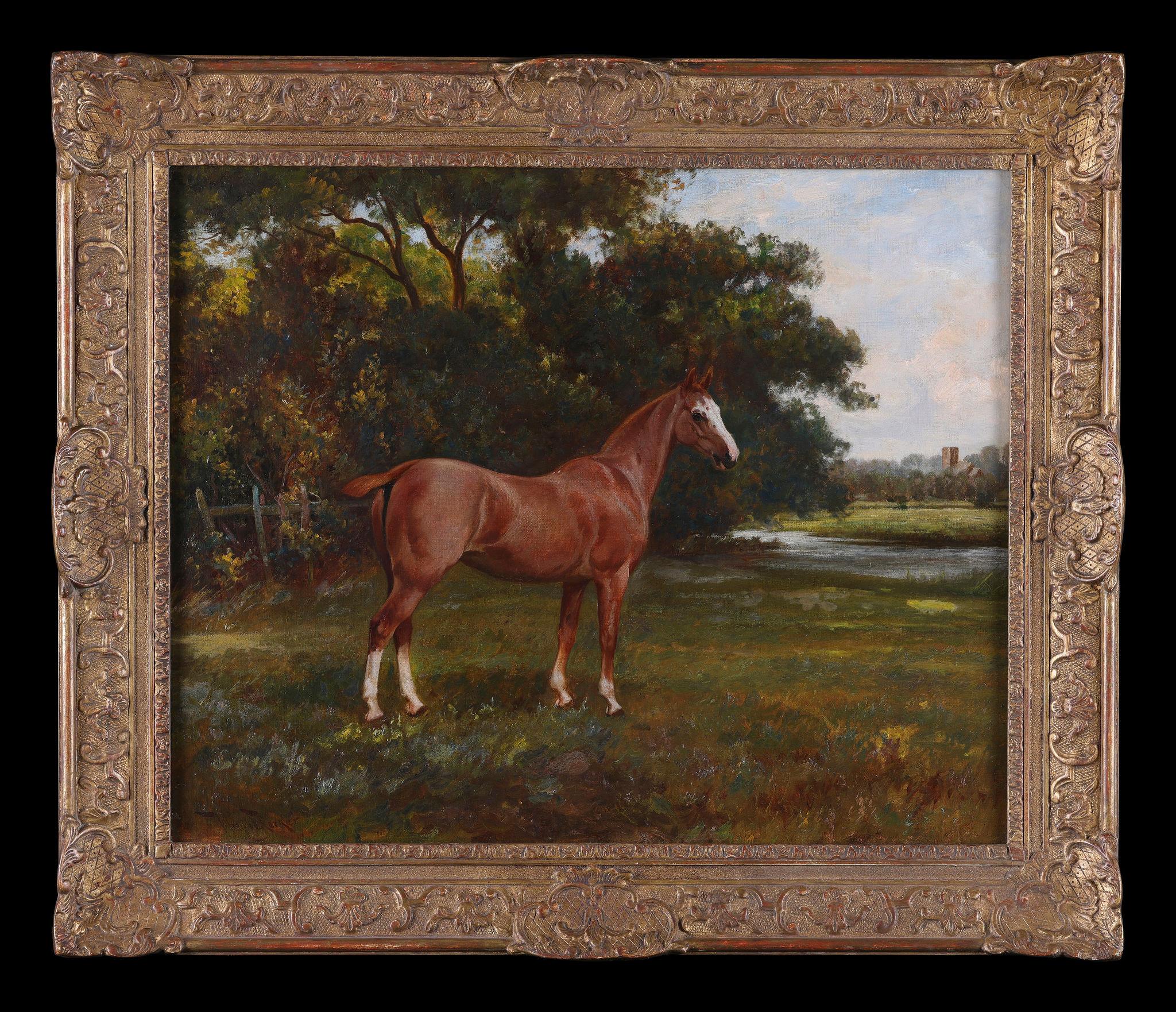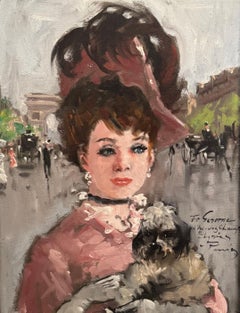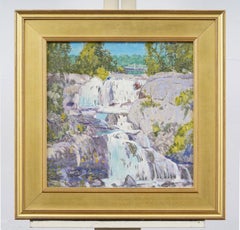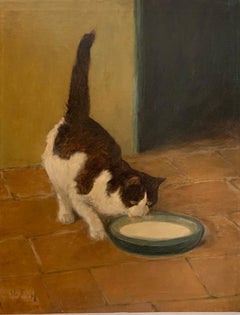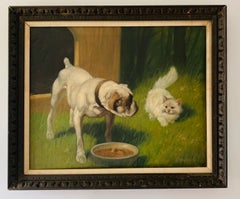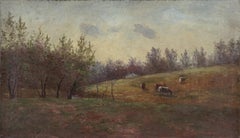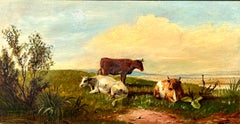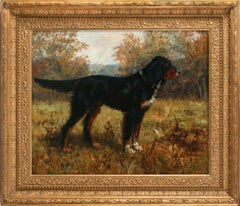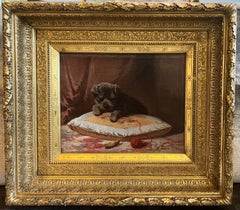
1876 Beautiful GILDED FRAME Antique SCHNAUZER PUPPY Playing w/ Yarn
View Similar Items
Want more images or videos?
Request additional images or videos from the seller
1 of 13
Hermann Simon1876 Beautiful GILDED FRAME Antique SCHNAUZER PUPPY Playing w/ Yarn1876
1876
Price:$3,200
$4,200List Price
About the Item
- Creator:Hermann Simon (1846 - 1897)
- Creation Year:1876
- Dimensions:Height: 16.5 in (41.91 cm)Width: 18.5 in (46.99 cm)Depth: 3 in (7.62 cm)
- Medium:
- Movement & Style:
- Period:
- Condition:
- Gallery Location:New York, NY
- Reference Number:1stDibs: LU1299211189172
About the Seller
4.4
Vetted Professional Seller
Every seller passes strict standards for authenticity and reliability
1stDibs seller since 2019
80 sales on 1stDibs
Typical response time: 1 hour
Authenticity Guarantee
In the unlikely event there’s an issue with an item’s authenticity, contact us within 1 year for a full refund. DetailsMoney-Back Guarantee
If your item is not as described, is damaged in transit, or does not arrive, contact us within 7 days for a full refund. Details24-Hour Cancellation
You have a 24-hour grace period in which to reconsider your purchase, with no questions asked.Vetted Professional Sellers
Our world-class sellers must adhere to strict standards for service and quality, maintaining the integrity of our listings.Price-Match Guarantee
If you find that a seller listed the same item for a lower price elsewhere, we’ll match it.Trusted Global Delivery
Our best-in-class carrier network provides specialized shipping options worldwide, including custom delivery.More From This Seller
View AllFrench IMPRESSIONIST Parisian Lady w/ Poodl CHAMPS ELYSEES
By Francois Gerome
Located in New York, NY
Francois Gerome
French, 1895
Parisian Lady with a Poodle
Oil on canvas 12 by 16 in,
w/ frame 22x18in
Signed lower right
Francois Gerome was born in Budapest in 1895. He att...
Category
1960s Impressionist Animal Paintings
Materials
Oil
EXHIBITED American Impressionist OLD LYME Connecticut Triple Falls Oil Painting
Located in New York, NY
Carl Lawless (1894-1963)
Circa 1915-1920
Signed lower left
Oil on Canvas
17x17 inches image size
21x21 inches with frame
Good Condition
A beautiful American Impressionist Painting b...
Category
1910s American Impressionist Landscape Paintings
Materials
Oil
Brown and White Cat Drinking Milk From a Bowl
By Arthur Heyer
Located in New York, NY
Brown and White Cat Drinking Milk From a Bowl, by Arthur Heyer
Oil on canvas
21.5 x 25.5 inches
Arthur Heyer was born in Haarhausen. He studied at the ...
Category
Early 20th Century Realist Animal Paintings
Materials
Oil, Board
Dog Guarding Food Bowl From a Fluffy White Cat
By Arthur Heyer
Located in New York, NY
Arthur Heyer, 1871-1932
Oil on canvas, 22" x 27"
Signed on the front.
A bulldog is depicted guarding his bowl of food from a fluffy white cat, who keeps ...
Category
1880s Impressionist Animal Paintings
Materials
Canvas, Oil
Antique Painting of Jack Russels, Labs, Terriers, and Fox Hounds
By Valentine Thomas Garland
Located in New York, NY
Up for sale is a beautiful original painting by Valentine Thomas GARLAND (1868-1914). Garland was a painter of animal and genre subjects, working in both oil and watercolor. He was ...
Category
1890s Academic Animal Paintings
Materials
Oil
Antique Sporting Art Realist Southern Trout Fishing Pole
Located in New York, NY
Asa Coolidge Warren (1819 - 1904)
Oil on Canvas
Sight Size: 18x20
Overall frame size: 26x28
Signed and Dated left: 1884
Housed in original gold gilded frame
Overall very good conditi...
Category
1880s American Realist Animal Paintings
Materials
Oil
You May Also Like
Antique American Hudson River School Oil Painting Cows Landscape Troy New York
Located in Portland, OR
A rather beautiful Hudson River landscape oil on canvas painting by the celebrated New York artist Charles Grant Beauregard (1856-1919), signed and dated 1898.
The painting depicts c...
Category
Late 19th Century Hudson River School Animal Paintings
Materials
Oil, Canvas
19th Century Hudson River School Bucolic Landscape
By John Frederick Kensett
Located in Soquel, CA
Beautiful example of the Hudson River School romantic bucolic New York autumn landscape with cows foraging. Illegible artist signature on stretcher bar (See enhanced images). Condition: very good; professionally cleaned and minor restoration upper right hand corner where paint was missing.
Unframed.
Image size: 14"H x 24"W x .75"D
Hudson River School was an informal association was America's first so-called school of painting and the dominant landscape style until the Civil War. The name derives from a group of 19th-century landscape painters working in New York state. With realistic composition, they depicted romantic views of unsettled areas of the Hudson River Valley especially lakes, rocky gorges, and forests in the Catskill Mountains. About a fourth of these artists utilized luminism or effects with special lighting techniques to convey lofty emotions through contrasts of light and dark. Included in this Hudson River luminist category were Washington Allston, Albert Bierstadt, William Hart, and Frederic Edwin Church...
Category
1870s Hudson River School Landscape Paintings
Materials
Linen, Oil
$2,400 Sale Price
20% Off
Cows Grazing in Field
By George Wright
Located in Fredericksburg, VA
This serene Hudson River School painting by George Wright captures a peaceful moment of pastoral life, where three cows rest and graze under a wide, luminous sky. The composition gen...
Category
Late 19th Century Hudson River School Landscape Paintings
Materials
Canvas, Oil
Gordon Setter in a Landscape by Otto Norquist (American: 1859-1906)
Located in New York, NY
Otto Norquist (1859-1906)
"Gordon Setter in a Landscape, 1890"
Oil on canvas
22 x 27 inches
Signed and dated 1890, lower right
Otto Norquist was born in...
Category
Late 19th Century Hudson River School Landscape Paintings
Materials
Oil, Canvas
Livestock Landscape
By Eugène Joseph Verboeckhoven
Located in Fredericksburg, VA
Eugène Joseph Verboeckhoven, a luminary of 19th-century Belgian art, wielded his brush with unparalleled mastery, capturing the timeless allure of pastoral landscapes and noble anim...
Category
Mid-19th Century Hudson River School Figurative Paintings
Materials
Oil, Board
Pastoral Landscape titled "Cows Resting"
By James McDougal Hart
Located in Fredericksburg, VA
James McDougal Hart (1828-1901) was a prominent American landscape painter and a key figure in the Hudson River School. His landscapes are characterized by their serene and idyllic q...
Category
Late 18th Century Hudson River School Landscape Paintings
Materials
Canvas, Oil
Recently Viewed
View AllMore Ways To Browse
Schnauzer Painting
White Bird Painting
Two Birds Painting
Antique Horse Painting
Animal Oil Painting Antique
Large Paintings With Birds
R Styles Painting
Rabbit Art
Antique Animal Paintings
Antique Oil Paintings Of Animals
Horse Portrait Painting
Dog Portrait
Black Oil Painting Antique
Exotic Animal
Cat Original Paintings
Two Horse Paintings
Portrait Of Dog
Dog Oil Paintings

